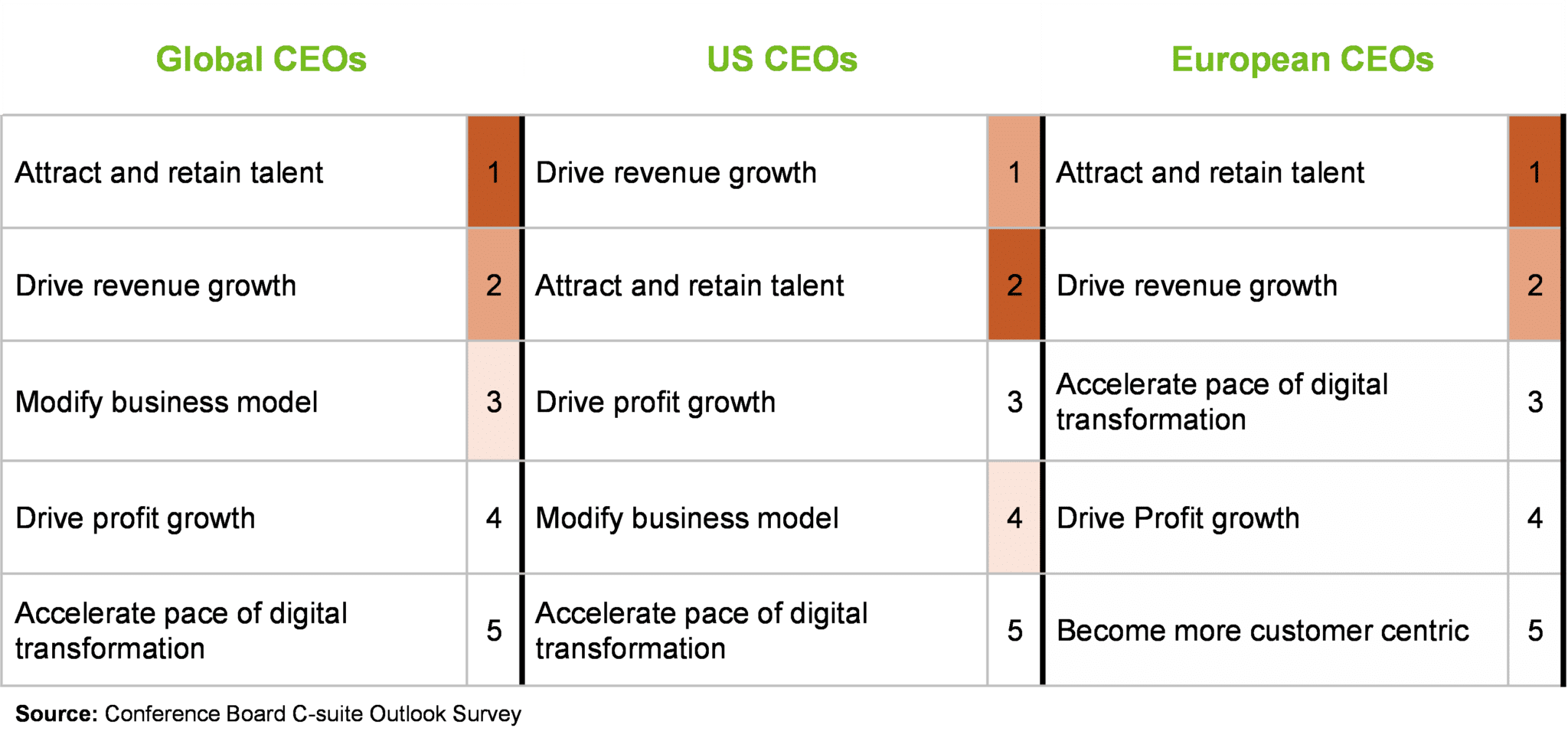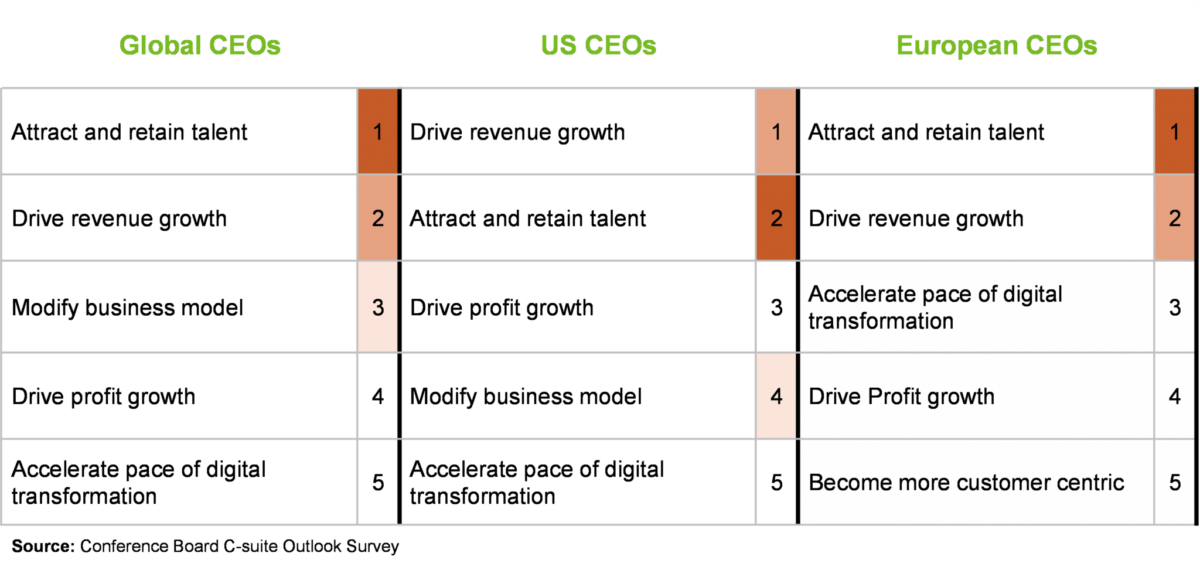In the fast-moving consumer goods sector, “moments of truth” represent the key points where consumers interact with a product, and their thoughts and opinions about it are formed. Ensuring that a consumer forms a favorable opinion at each moment of truth is key to the brand’s success in the market. It can also determine whether an existing customer leaves or remains loyal to your brand.
A focus on key customer interactions is also fundamental to creating a customer-centric organization. Back in 1987, Jan Carlzon, former CEO of SAS Group, released a book titled Moments of Truth, describing his experiences transforming the airline. Noting annual contact with SAS for its 10 million customers came through an average of five 15-second interactions with employees, he argued that “SAS is ‘created’ 50 million times a year, 15 seconds at a time. These 50 million ‘moments of truth’ are the moments that ultimately determine whether SAS will succeed or fail as a company.” Accordingly, his guidance to leaders emphasized restructuring company approaches to ensure that customer needs (and the people who respond to them) are given top priority.
Talent management can benefit from a similar emphasis on moments of truth for employees, the company’s internal customers. The current focus on the employee experience often highlights the importance of creating positive impressions of key events across the employee lifecycle. Those could include the first day on the job, being promoted, passing a service milestone or leaving the organization. We believe, however, that organizations would be well served by taking lessons from the way consumer product and service companies think about and manage customer connections more broadly.
Critical moments of truth for customers
While there are numerous interaction points along the customer journey, not all of them have a significant impact on the brand’s success. To create or identify a moment of truth, organizations seek interaction points that can leave a lasting impression on their customers.
The three moments of truth are:
- First moment of truth (FMOT): This is typically the first interaction point between a consumer and an organization’s product or service. It is often a window of three to seven seconds when the consumer comes into contact with the product or service, whether online or in a physical store. This is the actual moment of conversion for marketers.
- Second moment of truth (SMOT): Refers to the experience the customer has with the product or service after purchase. It shapes the customer’s future buying decision. If the customer has a good experience using the product, they’ll likely choose the same brand again. And they might recommend the brand to people in their social circles.
- Ultimate moment of truth (UMOT): When a customer publishes feedback content after an experience with the brand, they are at the ultimate moment of truth. It could be a review or social media post about how they liked (or didn’t like) using a product or service. It is a form of brand advocacy that attracts new prospects to the brand.
Managing these points in customers’ interactions with the brand is a primary factor in customer attraction and retention. With a number of brands producing similar products for the same market, an organization needs a competitive advantage and brand differentiation to stand out. Customers’ views of a brand are based on the organization’s ability to engage them at these core interaction points. For example, in most service organizations, the quality of customer service may well determine the view of the brand and, ultimately, the organization’s market position.
Extending to rewards and talent management
There are clear parallels between these moments of truth and an organization’s talent management processes, given that the organization’s most important internal customers are its employees. Winning the war for talent consists of an organization’s successful attraction of talent (FMOT), the engagement and retention of talent (SMOT), and the belief that the organization is an employer of choice in the market (UMOT).
Winning at these moments of truth in talent management is of primary importance for executive leadership. The top internal issue on the minds of global executives, per the Conference Board C-Suite Outlook Survey, is the attraction and retention of talent (per the table below).

Here are some perspectives on extending these moments of truth to talent management.
First moment of truth: talent acquisition
How do companies position themselves as attractive employers to candidates? This moment is concerned with talent acquisition. There are limited data points that a prospective employee has to make an informed decision about whether to join your organization or another one. These references include:
- A competitive and compelling compensation offer, including base salary, bonus opportunity, benefits. In tight labor markets, this may also include sign-on bonuses.
- The nature of the work and how it aligns with the candidate’s interests, capabilities and sense of purpose.
- How the candidate perceives the organization, including its mission, reputation, stability, culture and reputation as an employer.
- Potential for professional development and long-term career growth.
- How the candidate feels about the people they’ve interacted with, especially the hiring manager, but also peers, subordinates, internal recruiter and potentially former employees.
We see emphasis on these themes in the research we have conducted as part of Korn Ferry’s long-standing partnership with Fortune magazine to identify the World’s Most Admired Companies (WMAC) and identify the factors that contribute to their strong reputations and performance.
WMAC executives recently surveyed cite creating a sense of purpose and meaning in work and a strong employer value proposition as the most important criteria employees will use in selecting an organization in the future. Right behind these factors, WMAC executives emphasize the importance of supporting continuous growth and development opportunities and offering flexible and personalized career paths to draw in talent in the years ahead. Separately, learning and development have emerged as the top cultural priority for the WMACs.
Second moment of truth: engagement
When employees wake up in the morning, are they energized to go to work? This moment is all about engagement and retention. It’s a function of how the employee views the experience of working for the organization and whether there is an adequate return on investment for the employee—i.e., that the rewards for the work exceed the costs of doing the work.
In a digital world, the four walls of an organization have increasingly large windows. And interested eyes are looking both in and out, which puts additional pressure on companies from an engagement and retention perspective. Social media allows employees, especially those with highly desirable skills and experience, to promote their knowledge and accomplishments—making key talent more difficult for organizations to hide. Likewise, online resources make it easier for employees to compare what they currently get in terms of compensation, career development opportunities and work environments with what is offered elsewhere. That means commitment must be re-won continually.
Our research, as well as work with clients, indicates that a range of non-financial rewards take a much larger role than financial rewards. The table below highlights data from our global employee engagement database and indicates that a balance of these non-financial rewards are key differentiators with talent in deciding whether to stay with their organization or to leave for new opportunities.

While a competitive compensation and benefits program is often instrumental in attracting talent into the organization, it is usually the suite of non-financial rewards that are key in engaging and retaining talent. These non-financial rewards include:
- Trust in company and leadership: Employees need confidence that the organization is well-led and headed in the right direction.
- Room for growth: Employees need to have a positive view of their opportunities to learn and grow in the organization.
- A fair exchange: Employees need to know that they are valued as people and see a balance between rewards and contributions.
- Control and influence: Employees want authority that matches their responsibilities and an opportunity to shape how work is done.
- Environment for success: Employees want efficient work processes and collaborative support from co-workers to allow them to perform at their best.
We see some organizations over-indexing on compensation interventions to win at the second moment of truth with tools such as retention bonuses, counteroffers and one-off compensation adjustments. However, the underlying issues with employees are quite often in other areas, such as lack of career development, the culture that leaders and managers set, and loss of meaning and purpose in the work itself. Frequently in exit interviews, employees will say they are leaving because the compensation was better at the new employer and they received an offer they couldn’t refuse, but it’s a convenient answer that doesn’t burn bridges with the organization they are leaving. The real question to an employee is “Why did you pick up the phone and listen to the offer?” Often, it is related to non-financial rewards (or lack thereof).
Perhaps the best way to understand the health of the organization at the second moment of truth is via employee engagement surveys and exit interviews. However, data suggests that capturing and actioning this information is an opportunity in many organizations. Only 50% of organizations conduct formal employee engagement surveys, and 60% of organizations conduct exit interviews with departing employees. Organizations cannot take effective action if they don’t have basic information to understand employee perceptions and assess issues.
More important than conducting a diagnosis of employee engagement is taking action on it. Sharing engagement survey findings and involving employees in implementing plans to address gaps sends strong and reinforcing signals that the organization is serious about improving engagement and retention levers.
Ultimate moment of truth: external perceptions

This moment involves how a company is understood as an employer, based on what current and former employees communicate externally about their experiences. Increasingly, there is a power shift in play, brought about by digitalization, toward employees (and consumers). Employees have more power than ever before—with the click of a mouse or the strike of a computer key; because of that, companies need to be more careful in managing reputation. Going back to our WMAC research, we find evidence that WMAC executives are well aware of this shift. They cite poor employee experiences as one of the top risks to a company’s success and reputation, along with quality issues and gaps in ethics and compliance.
External communication channels include sites that provide business reputation ratings and comments (e.g., LinkedIn, X/Twitter, Yelp, Better Business Bureau), employer reputation and ranking websites (e.g., Glassdoor, Fortune’s Most Admired Companies, Best Places to Work, Best Places for Working Mothers) as well as other social media sites (e.g., Facebook, Reddit). Obviously, a risk is that information is for all to see—inside and outside the organization—and once on the internet, it is there in perpetuity. As these channels mature and become more widely known, organizations need to devote more attention to managing external perceptions.
Winning the ultimate moment of truth in talent management is critical for success in the other two. Turning employees into advocates for an organization builds a positive employer reputation that makes it attractive to candidates (the first moment). As a marker, some organizations track employee net promoter scores focused on the willingness of their people to recommend the organization as a place to work. That advocacy can also translate to referrals from employees that can help organizations with hard-to-fill positions or in attracting talent from more diverse pools.
This ultimate moment also influences the second. How an organization is known externally as an employer can influence the views of current employees on whether they are “playing for a winner” that offers work experiences that are competitive with potential alternatives (as employees look out the growing “organizational windows”). Negative impressions in these areas can be expected to have implications for employee engagement and retention.
Talent management: Where to now?
Organizations would be well served by learning from consumer product and service companies and applying more discipline in understanding how to win across the moments of truth in a talent management context. To do so effectively, consider these four action steps.
1. Understand what employees really value
Information is foundational for success. In the first moment of truth, related to talent acquisition, feedback from new hires successfully brought into the organization—and candidates the organization sought to hire but did not—can provide insights to understand the primary factors affecting employment decisions and enhance recruitment and onboarding efforts.
In the second moment of truth, concerned with engagement and retention, periodic total reward optimization studies can be used to determine how tangible and intangible rewards are perceived by employees and guide tradeoffs to maximize the return on reward investments. Likewise, engagement and exit surveys—especially if integrated with new hire and candidate feedback via a common platform and complementary design—can build further understanding of key levers for motivating employees, positioning them for success and mitigating problematic turnover. Finally, in the ultimate moment of truth, involving external perceptions, social media sites and other communication channels introduce risks to organizational reputations as employers—but also create opportunities. In addition to regular monitoring, organizations should leverage these outlets proactively to share positive messaging.
2. Tailor rewards to employee groups
Organizations need to segment information on what people value to optimize reward impact in response to different employee wants and needs. As evidenced by return-to-office debates, employees are increasingly pressing for more control over their work. Just as customers want personalized products, employees are seeking tailored work experiences. Beyond focusing on broad personas, organizations will want to work toward greater personalization of experiences across the employee lifecycle.
Recognizing the value different groups of employees place on different rewards, career development, job design, and financial and non-financial recognition programs can be applied flexibly across roles and career stages. Given the limits of mass customization of rewards, however, organizations will also need to emphasize process simplicity and flexibility to empower employees and encourage them to take parallel accountability for managing and optimizing their work experiences.
3. Ensure effective communications
Internal messaging is key to communicate the value of what organizations offer. Total rewards statements, for instance, are powerful tools for building awareness of the full suite of rewards. Organizations are also wise to drive toward a consistent understanding of key rewards and connect them to employer value propositions.
For example, many organizations are seeking to build common perspectives on the meaning of career development. This includes how it’s defined in the organization and where it occurs, available resources to support growth and connect people with opportunities, and the responsibilities of individuals, managers and the organization.
Smaller and flatter organizations can create messaging to emphasize that, while promotion possibilities may be constrained, they offer distinctive opportunities for employees to be close to the action, wear multiple hats, act independently and extend their skill sets. While clarity of organization-wide messages is important, so too is enabling and empowering managers to deliver on the employer value proposition. Managers commonly represent the “last mile” in the employee experience, helping to communicate and translate rewards for employees to reinforce the value. The HR function should be actively involved in helping line managers understand and reinforce the value of both tangible and intangible reward elements.
4. Manage change
Total reward programs are most successful when they effectively balance the needs of an organization and its employees. Accordingly, as changes are designed and implemented, leaders need to articulate the “why” clearly, not only for the organization but also from the employee’s perspective.
Key to making the connections successfully is alignment across leadership levels. The managers closest to employees, who are most accessible and often trusted, typically play a “sense-making” role amid change. Their support is critical to reinforcing the benefits of new reward elements for teams and individual employees. Finally, organizations need to define the metrics that will be used to assess progress and capture successes. A major restaurant chain implementing enhanced employer branding, for instance, focused on recruitment impacts (e.g., cost per hire, offer-acceptance rates, time to fill vacancies, referrals from current employees), levels of engagement across employee groups and associated outcomes (e.g., absenteeism, disciplinary issues), and turnover rates in evaluating the returns.
The post 3 critical ‘moments of truth’ in rewards and talent management appeared first on HR Executive.
